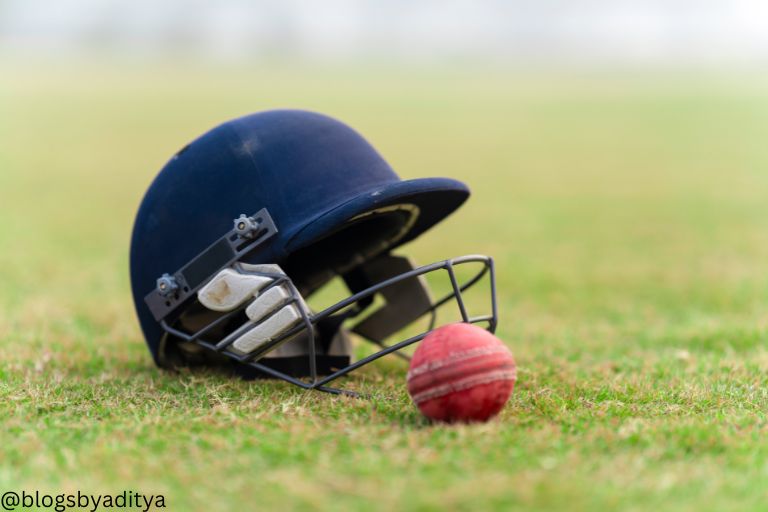Fastest Ball in Cricket: The Legends Behind the Speed...
The thrill of watching a bowler charge in and deliver a ball at lightning speed is one of the most exhilarating aspects of cricket. The fastest ball in cricket is a testament to a bowler’s skill, athleticism, and power, leaving spectators and batsmen in awe. In this blog, we explore the fastest deliveries ever recorded, the bowlers who delivered them, and what makes such speeds possible.

The Fastest Ball in Cricket History
The record for the fastest ball in cricket is held by Pakistan’s Shoaib Akhtar, famously known as the “Rawalpindi Express.” During the 2003 Cricket World Cup, Akhtar bowled a ball clocked at an incredible 161.3 km/h (100.23 mph) against England. This delivery remains unbeaten, cementing his legacy as one of the most fearsome fast bowlers in cricket history.
Other notable deliveries include:
- Shaun Tait (Australia): Delivered a ball at 161.1 km/h during an ODI match against England in 2010.
- Brett Lee (Australia): Clocked at 161.1 km/h during a Test match against the West Indies in 2005.
- Jeff Thomson (Australia): Estimated to bowl at speeds close to 160.6 km/h during the 1970s.
These milestones highlight the rare ability of some bowlers to consistently bowl above the 150 km/h mark.
The Legends of Speed
- Shoaib Akhtar
Shoaib Akhtar’s bowling was not just about speed; his aggressive run-up and fiery attitude made him one of cricket’s most electrifying performers. Akhtar’s ability to bowl consistent Yorkers and bouncers at extreme speeds created havoc for batsmen worldwide. - Brett Lee
Known for his smooth run-up and explosive bowling action, Brett Lee consistently delivered balls exceeding 150 km/h. He combined pace with precision, taking 718 wickets in his international career and earning a reputation as one of cricket’s finest pacers. - Shaun Tait
Shaun Tait’s unorthodox action and sheer pace made him a standout fast bowler. Despite a relatively short international career, Tait’s top speed remains one of the fastest ever recorded in cricket.
The Science Behind Fast Bowling
Achieving the fastest ball in cricket involves a combination of physical strength, technical precision, and biomechanical efficiency. Here’s what goes into it:
- Run-Up Momentum: The bowler’s run-up generates kinetic energy, which is transferred into the delivery.
- Explosive Power: Strength in the legs, core, and shoulders enables bowlers to impart high velocity to the ball.
- Bowling Action: A smooth, coordinated action ensures maximum force transfer without losing control.
- Flexibility: Allows a full range of motion, which contributes to the speed of the release.
Challenges of Bowling at Extreme Speeds
While delivering the fastest ball in cricket is a feat of athletic excellence, it comes with challenges:
- Injury Risks: Fast bowlers are prone to stress injuries, particularly in the back, knees, and shoulders.
- Sustainability: Maintaining extreme speeds throughout a career requires rigorous training and recovery protocols.
- Control vs. Speed: Balancing speed with accuracy is critical for success in competitive cricket.
Why Speed Matters in Cricket
Speed in cricket adds a dynamic element to the game, creating opportunities for:
- Wickets: Fast deliveries challenge batsmen’s reaction times, leading to dismissals.
- Intimidation: The psychological pressure of facing high-speed balls can unsettle even the best batsmen.
- Entertainment: Spectators love the excitement of watching bowlers push the boundaries of pace.
The Future of Fast Bowling
With advancements in training, sports science, and analytics, we may soon witness even faster deliveries. Emerging fast bowlers from around the world are raising the bar, keeping the competition fierce and exciting. As cricket evolves, the quest to break the record for the fastest ball in cricket will continue to captivate fans.
The fastest ball in cricket is more than just a statistic; it symbolizes the pinnacle of human performance in the sport. From Shoaib Akhtar’s iconic delivery to the relentless pace of modern bowlers, speed remains a thrilling and integral part of cricket’s appeal.


